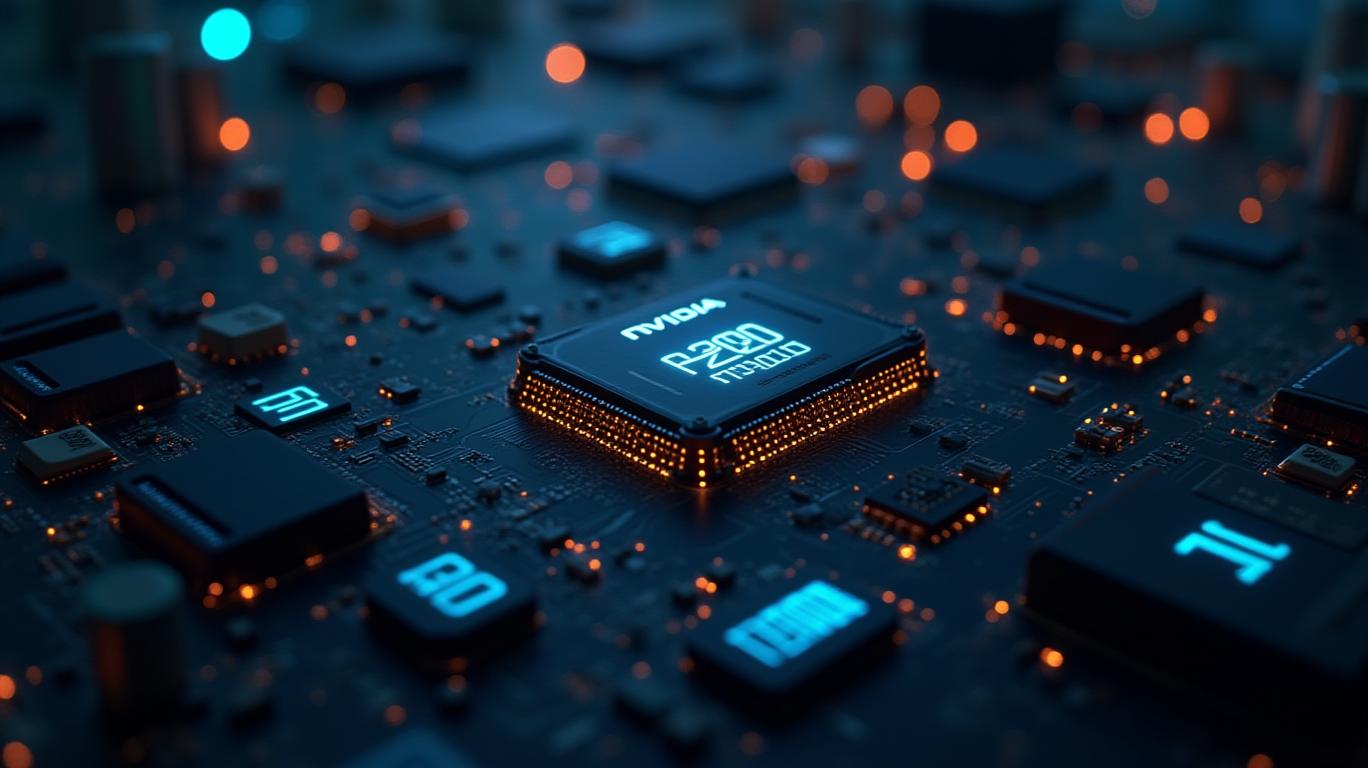Nvidia's AI Ambitions Clash with Geopolitical Storms: A $20 Billion Crossroads
The semiconductor giant Nvidia finds itself at a pivotal juncture as it navigates a perfect storm of geopolitical tensions, regulatory headwinds, and shifting market dynamics. Bank of America’s stark warning of a potential $15–$20 billion annual revenue hit from U.S. export controls targeting China has thrown into sharp relief the vulnerabilities of Nvidia’s AI-driven growth strategy. With its fiscal Q2 2025 earnings report due May 28, investors are bracing for a reckoning—one that could redefine the company’s trajectory in the global AI race.

The China Meltdown: A Vanishing Act for Revenue
Bank of America analysts estimate that China’s reduced demand for Nvidia’s cutting-edge AI chips—such as the H200 and B200 GPUs—could strip 20% of its long-term data center market opportunity by 2028–2029. These advanced chips, critical for training large-scale AI models, face stringent U.S. export restrictions, with China now barred from accessing the most powerful iterations. The fallout is already visible: data center revenue in Asia-Pacific, which represented 30% of the region’s sales, has begun to shrink.
BofA’s Vivek Arya terms this a “vanishing act,” as China’s cloud giants and hyperscalers—once major buyers—now face steep barriers to acquiring the tools needed to compete in AI. The pain is quantifiable: the firm now forecasts Nvidia’s fiscal Q2 revenue at $44 billion, $2.9 billion below consensus estimates, citing the H20 chip export ban to China and margin pressures. Gross margins are projected to dip to ~72%, down from earlier hopes of a mid-70s recovery, with fiscal 2026 EPS estimates facing a potential 10% downward revision.
The Geopolitical Tightrope: Risks and Resilience
The $20 billion revenue gap is not merely a numbers game. It reflects a broader struggle over control of the AI infrastructure stack. China’s exclusion from next-gen chips threatens to derail its ambitions to build domestic AI ecosystems, while U.S. regulators propose new measures like “boot-lock” technology—designed to disable chips if moved to restricted regions. These moves amplify uncertainty, as China remains a linchpin of global cloud spending, accounting for ~30% of worldwide hyperscaler capex in 2023.
Yet BofA’s cautious optimism underscores Nvidia’s enduring strengths. The firm maintains a Buy rating, citing the company’s “mission-critical” dominance in AI infrastructure and the likelihood of a 35% capex surge from Big Tech in 2025. The Q2 results, which reported a record $30 billion in quarterly revenue driven by AI demand, hint at resilience. CEO Jensen Huang emphasized that Nvidia is “innovating faster than global changes”—a nod to new chips like the GB300 and Vera Rubin, designed to outpace regulatory constraints.
The Path Forward: Balancing Act or Breakthrough?
The stakes are enormous. BofA estimates that $9.8 billion of Nvidia’s data center revenue (6.45% of total) could be at risk if hyperscaler capex falters, even excluding China’s post-2023 contributions. Meanwhile, the company faces margin pressures from rising R&D and supply chain costs, compounding the challenge.
The coming quarters will hinge on two factors: 1) Whether U.S. regulators grant exceptions or clarity on export rules, and 2) Whether hyperscalers like Microsoft, Amazon, and Google can offset China’s losses with accelerated spending. BofA’s baseline scenario assumes a $50 billion AI infrastructure market contraction by 2029, with half the loss tied to China and 10% to regulatory ambiguity.
Conclusion: A Linchpin Tested
Nvidia’s story is no longer just about GPUs—it’s about geopolitical chess and the calculus of risk in a fractured tech landscape. The $20 billion China-related revenue loss looms large, but so does the company’s unmatched position in AI’s core infrastructure. BofA’s Buy rating, despite the headwinds, reflects faith in Nvidia’s ability to pivot and innovate.
The May 28 earnings report will be a litmus test: if hyperscaler spending surges as projected, and margin pressures ease, the stock could rebound. But if the “vanishing act” accelerates, the $20 billion gap could become a chasm. For now, investors are left weighing whether Nvidia’s AI crown will endure—or if the geopolitical storm will force a recalibration of expectations.
As the data shows, the path forward is clear: $30 billion in quarterly revenue is a record, but $20 billion in potential losses is a wake-up call. The AI race isn’t just about technology—it’s about who can navigate the stormiest seas.


_442a2dcc1749832873286.jpeg)
_e68fac6d1749831664430.jpeg)






